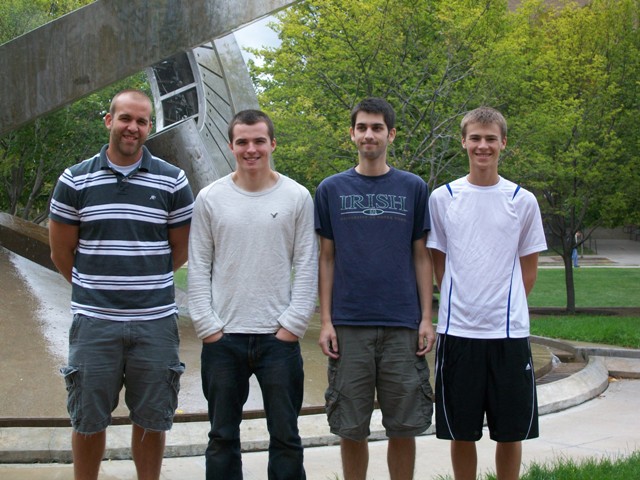Absorbable hydrodissection fluids
Biocompatible, absorbable, and thermal reversible hydrodissection fluid to protect neighboring tissue during tumor ablation.
Design Award
- Tong Biomedical Design Award Winner
News About this Project
- Publication: Design and Validation of a Thermoreversible Material for Percutaneous Tissue Hydrodissection, J Biomed Mater Res B Appl Biomater (June 6, 2013)
- Licensed by: NeuWave Medical
- Patent: Hydrodissection Material with Reduced Migration, US20130096552A1 (October 14, 2011)
- Award: 2nd Place, Collegiate Inventors Competition, BarrierASAP (2011)
- Award: 3rd Place, NCIIA BMEStart Undergraduate Design Team Award (2011)
Project Overview
A common technique to facilitate a percutaneous thermal ablation is hydrodissection. During hydrodissection, fluid is injected between the target ablation site and any surrounding tissues which require thermal protection. The hydrodissection fluid creates a physical, thermal and, in the case of non-ionic fluids, electrical barrier to protect such vulnerable tissues. Current fluids are relatively non-viscous, prone to migration in the abdominal cavity, and readily absorbed by the body. As a result, large fluid volumes are often required (~1 L) to create an effective barrier. Even with large volumes, the fluid barrier can degrade substantially during a procedure.
Last semester, a 19.0% Poloxamer 407 (aka PF127) solution in DI water was formulated and tested to prevent fluid migration and barrier degradation while retaining the useful characteristics of currently used hydrodissection fluids. Poloxamer 407 is a thermoreversible gel that could be injected as a fluid, then form a gel in vivo at body temperature. This does solve the main problem with other hydrodissection fluids; however, it also presents new problems to solve. The main issue with PF127 is that it is too viscous of a fluid to readily inject through a small gauge of needle. In addition, initial animal testing has shown that too much motion between the ablation site and surrounding tissue can inhibit and even prevent gelation in vivo.
The objective of this semester’s project is to improve our fluid, probably through a series of additives to our original solution and to quantify how different additives affect our Poloxamer solution.
Team Picture

Image

Files
- End of Semester Poster PDF (May 2, 2011)
- Executive Summary for TONG Presentation (May 2, 2011)
- Final Paper, Final PDS at end (May 3, 2011)
- Publication: A Thermoreversible Barrier for Hydrodissection during Ablation Procedures (May 3, 2011)
- Mid-Semester Presentation PDF (March 3, 2011)
- Product Design Specifications (March 8, 2011)
- Midsemester Paper (March 9, 2011)
Contact Information
Team Members
- Patrick Cassidy - Team Leader
- Sean Heyrman - Communicator
- Anthony Sprangers - BSAC
- Alexander Johnson - BWIG
Advisor and Client
- Prof. John Puccinelli - Advisor
- Prof. Chris Brace - Client
Related Projects
- Spring 2011: Absorbable hydrodissection fluids
- Fall 2010: Absorbable hydrodissection fluids
